Tibet is one of the five ethnic minority autonomous regions in China. Known as the roof of the world, Tibet has an average elevation of 4,000 meters. The high altitude has created the unique wonders of snow-capped mountains and glaciers here. In addition, Lhasa, the capital of Tibet, is also known as the Sunshine City because of its annual average of 3,000 hours of sunlight. Do you want to explore such a characteristic city? Take a look at this 7-day selected Tibet tour. You will visit Tibet from Lhasa to Shigatse. During the best Lhasa tour, you will walk into the Potala Palace and appreciate the gorgeous Tibetan building. You will also walk on Barkhor Street to experience the most traditional Tibetan life. On the way to Shigatse, you will stop at Gyangtse to visit the most famous Yamdrok Lake and Karola Glacier. The Tashilunpo Monastery in Shigatse is an attraction that you should never miss. After the 7 days Tibet tour, I am sure you will fall in love with this city. Don’t hesitate to join us now!

Upon arrival in Lhasa, you will be picked up at the airport by our guide with your name sign. Then the driver will take you to the hotel and you can have a good rest.
Lhasa is the capital of China’s Tibet Autonomous Region. It is also the political, economic, cultural, and religious center of Tibet, as well as a sacred place of Tibetan Buddhism. Lhasa is located on the central part of the Tibetan Plateau and the north side of the Himalayas. With an annual sunshine time of more than 3,000 hours, Lhasa is reputed as the “Sunshine City”. There is little rainfall, no severe cold in winter, or no extreme heat in summer. The climate is so pleasant all year round that it is a good place to live in or pay a visit to.
When coming to plateau, most people will feel, to varying degrees, shortness of breath, chest tightness, dyspnea, and other hypoxia symptoms. But if we protect ourselves correctly, about two days later the above symptoms can be eased and we will feel better. It is advisable to stay in the hotel and let yourself gradually adapt to the environment when you come to Tibet on the first day. You are recommended to eat more carbohydrates and easily digestible food. Drink plenty of water to keep your body hydrated. It’s best to avoid alcohol, cigarette, and excessive activities. Eat more fruits, vegetables, and other foods rich in vitamins. Keep your body warm and avoid catching a cold.
This morning we will start with Norbulingka, which is located in the western suburbs of Lhasa. There are 374 rooms and it is the largest man-made garden in Tibet with the best scenery and the most historical sites. It was first built in the 1740s by the Seventh Dalai Lama and later expanded to become his summer palace. There is no denying that everyone in Tibet longs to enjoy some cool from the garden when they are confronted with the hot summer. Therefore, every year from April to September in the Tibetan calendar, the Dalai Lama would handle political affairs and hold ceremonies here in Norbulingka. Covering an area of about 360,000 square meters, the garden is divided into three parts: the palace area, the front of the palace area, and the forest area. Forests account for about half of the garden. You will be glad to walk around in the garden, accompanied by the fabulous natural scenery, strong Buddhist culture buildings, and superb architectural designs.
Next, we are to visit the Drepung Monastery where many famous monks have stay. It is regarded as the largest Buddhist monastery in the world. The Drepung Monastery, the main monastery of the Gelug Sect of Tibetan Buddhism, is thought of as one of the three major monasteries in Lhasa. Another two are the Ganden Monastery and Sera Monastery. Because of its geographical location, the Drepung Monastery is also a sound viewing platform overlooking the whole city of Lhasa. Rows of white buildings cover up to the mountain slopes, looking like a huge heap of rice in the distance. Only standing above the high place can you truly understand how excellent the monastery is. What is the most famous in Drepung Monastery is the huge Buddha Thangka exhibited along the slopes during the “Sho Dun Festival”. This Thangka is a kind of Buddha painting that is 40-meter long and 37-meter wide. Every year visitors and Tibetan Buddhists from all over the world travel thousands of miles to witness the grand occasion. In the dignified and solemn sound of the dharma horn, tens of thousands of faithful believers all put their hands together and bow in worship. Sho Dun Festival was originally a purely religious activity and later became a combination of religious activities and recreational activities. After worshiping the Buddha Thangka, there will be a Tibetan Opera performance.
After lunch, we will visit the Sera Monastery, which is located at the foot of Salawzi Mountain in the northern suburbs of Lhasa. The name “Sera” means wild rose. The story has it that wild roses blossomed when the monastery was built and therefore it was named after the flower. The monastery is one of the three great monasteries in Lhasa and is the second largest monastery in the Tibetan area. The monastery buildings are of Tibetan style with the halls being resplendent and decorations being grand. There are many Buddha statues enshrined in the monastery as well as a great number of precious art treasures such as Buddhist scriptures, exquisite Thangkas, embroideries, and murals. It will be a good opportunity for you to witness the beautiful Buddhist art. Furthermore, the activity named “Debate Buddhist Scriptures” in the Sera monastery has long been well known in the Tibetan area. This is a kind of test to see if they have handled the Buddhist knowledge that they have learned well. You may want to know when and where do the debates happen. The debates are held in the northern part of the monastery. They start at 3 pm and last until 5 pm every day, except on Sundays and special festivals. When debating, one monk would sit on the ground while the other stands opposite. It can be seen that monks devote themselves to debating with exaggerated movements, which is very interesting.
Here are some tips when you visit the monasteries in Tibet. Any improper behavior is strictly prohibited. Each of us should observe the rules and regulations made in the monastery. When visiting the monastery, do not shout or ridicule anything inside. In particular, it is forbidden to touch or carve statues randomly. In the case of Buddhist activities, you should stand quietly and silently look at them or leave quietly. The most important is that taking photos is not allowed inside the Buddhist halls.
We believe that you have spent a good day. Then you will be sent to the hotel and have a good rest.
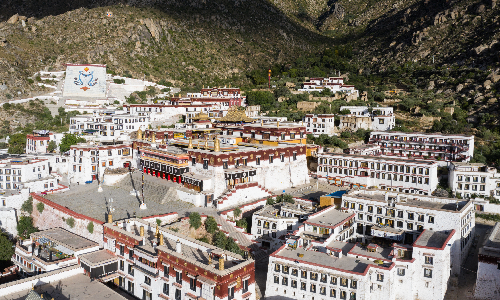
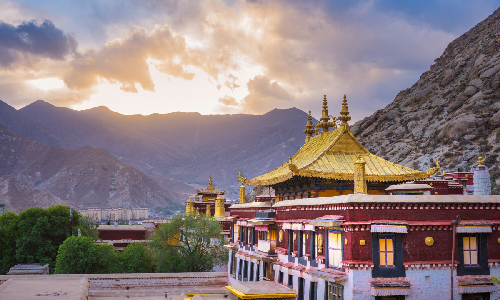
Today we will begin with the Potala Palace. It was built in the 7th century by the Tibetan King Songtsan Gambo (617-650) for his wife the Princess Wencheng of the Tang Dynasty (202BC-AD220). The statue of the princess, who married into Tibet from a place far away, is enshrined in this palace. The palace is situated on the Red Hill in the center of Lhasa with its highest point of 3767.19 meters above sea level. Thus, it is commonly known as the highest ancient palace in the world. From the foot of the entrance to the top of the palace, there are more than 900 stone steps. Walking along these steps can make you understand how imposing and sacred the building is. The word “Potala” is originally Sanskrit and can also be translated into “Putuo”. It refers to the house of Avalokiteshvara Bodhisattva. The Potala Palace consists of the Red Palace and the White Palace. The Red Palace is in the middle as the main body and the White Palace is on both sides as the two wings. The red and white palaces interlace with each other and form a group of overlapping buildings. Walking into the Potala Palace, you will immerse yourself in the splendid Tibetan culture.
After lunch, this afternoon we are to visit the Jokhang Temple, which is the first temple in Tibet. It was built in 647 by the Tibetan King Songtsan Gampo (617-650) to commemorate Princess Wencheng’s entry into Tibet. Later, it was renovated and expanded to form a huge architectural complex. When it comes to the architectural style, the temple combines the architectural art features of the Tang Dynasty, Nepal, and India. When it was built, it was only for the worship of the Buddha statues and collections of sutras. It never belongs to any Buddhist sect and is a sacred temple respected by all sects. Every year a meeting is held here to preach the Buddha’s teachings. And the ceremonies where Dalai Lamas or Panchen Lamas are initiated into monkhood are held here as well. In the middle of the main hall in the temple is a gold-plated bronze statue of Sakyamuni at the age of 12, which was brought by Princess Wencheng. In the side hall, the statues of Songtsan Gampo, Princess Wencheng, and Princess Bhruzun of Nepal are enshrined. Princess Bhruzun is another wife of Songtsan Gampo. The famous Lama Nima Tsering in the Jokhang Temple once said, “If you go to Lhasa and don’t go to the Jokhang Temple, you haven’t seen the true Lhasa.” This is probably the common sentiment of almost every person who travels to Tibet.
In the end, we will go to Barkhor Street. The street relatively preserves the original appearance of Lhasa. When visiting the houses and stores along the street, you can have an idea of what real Tibetan life is. Barkhor Street is a renowned commercial center as well as an important place of commodity collection and distribution in Tibet. Here you can enjoy yourself. There are numerous distinctive traditional handicrafts and wonderful religious products which enable you to purchase. If you want to taste some local food, here is also a good place. Besides, the street is a holy street for Tibetan Buddhism. It is a street of round shape which is like a huge clock revolving around the Jokhang Temple. The perimeter of Barkhor Street is only over 1,000 meters, and the street is paved with hand-polished stones. Although not very wide, it is the place with the largest visitor flow in Lhasa. On Barkhor Street, you can see many pilgrims, of which some are even teenagers. Those are the people who really kowtow step by step from thousands of miles away to Lhasa to worship the Buddha. Although the long way makes them have to endure a very poor and plain life, they still marched firmly toward the Buddha in their hearts.
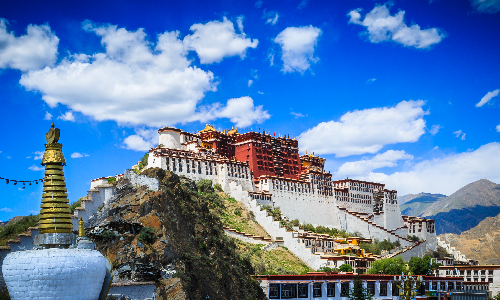
 Gyantse (4000 meters above sea level)
Gyantse (4000 meters above sea level) This morning we will head for Gyantse. We will drive south for about 270 km (6 hours) to our destination. Located in the rich plain of the upper reaches of the Nyang Qu River, Gyantse is one of the important grain planting areas in Tibet. With an average altitude of 3,900 meters and a mild climate, Gyantse was once the fief of the nobility. And now Gyantse is known as the granary of Tibet. It is also the third-largest town in Tibet, after Lhasa and Shigatse. Gyantse is one of the national historical and cultural towns, but also a new tourist town. The main scenic spots in Gyantse include Palcho Monastery, sunrise and sunset at Gyantse Dzong Fortress, and so on. On our way to Gyantse, you can see many scenic beauties.
We need to drive south for more than 100 km to travel through Yamdrok Lake. It takes us around 2 hours to arrive at Yamdrok Lake. This lake is also called “Jade Lake”. It is one of the three holy lakes in Tibet. The lake is 4441 meters above sea level. With a length of 130 km and a width of 70 km, it has a total area of 638 square kilometers, about 70 times the size of the West Lake in Hangzhou. It is the largest inland lake at the northern foot of the Himalayas. It is said that devout Buddhists will walk around the lake once a year. It will take at least a month. This is equivalent to their pilgrimage to Lhasa. They believe that in doing so, the Buddha will bless them auspicious all year round.
Next, we will continue to drive forward. And after going west for about 90 km (1 hour and 45 minutes), we can see the Karola Glacier on the roadside. You can take some pictures to grasp the exciting moment. The Karola Glacier covers an area of 9.4 square kilometers. The huge glacier stretches from the top of the mountain shrouded in clouds to the side of the road, which is only a few hundred meters away from the highway. It is the Karora Glacier that lies nearest to the road in the whole of Tibet. There are just over 300 meters between the glacier and the road. Although part of the glacier is covered by dust and appears black due to the influence of dust on the highway for many years, the upper part of the glacier is still shining under the sun.
This afternoon we will be ready to go on driving to Gyantse. When arriving at our destination, we aim to visit our first tourist attraction - Palcho Monastery. Its construction work started in 1427 and it took 10 years to complete the monastery. Its architectural art fully represents the characteristic style of the Tibetan monastery from the late 13th century to the mid-15th century. And it is also a building of the typical Tibetan Buddhist architecture combining pagoda and monastery. And the monastery and pagoda are naturally integrated and complement each other. In the Palcho Monastery, there is a world-famous Palcho Pagoda, which is also called “Bodhi Pagoda”. It has the reputation of “pagoda with tens of thousands of buddhas”. The story has it that there are more than 100,000 Buddha paintings enshrined in its hall. In the pagoda, there are also over 1,000 Buddha statues made of mud, bronze, and gold. Therefore, the Palcho Pagoda can be called a museum of Buddha statues. The nine-story pagoda is more than 42 meters high, with 77 Buddhist halls and 108 doors. It is a precious treasure in the history of Chinese architecture.
After that we will visit the Gyantse Dzong Fortress, which is located on the Dzong Mountain in the urban area of Gyantse County. Amid the lush green ground, an ochre yellow stone mountain rises straight from the ground, and a fortress with white walls and red roofs rises out of the stone mountain. Before the democratic reform, Tibet was governed by political and religious powers combined. The county government was both an official government and a monastery with a strong religious influence. In fact, the fortress was a palatial monastery. In 1904, the Tibetan army and people fought to the death against the British invaders at Dzong to protect their homeland. Now it has been determined as a patriotic education base. Through the scenic area, the original appearance of Gyantse in the feudal serfdom era is displayed. And the heroism of the Tibetan army and people in the fight against the British invaders is reappeared.
This night we will live in the hotel as planned. Have a good rest.
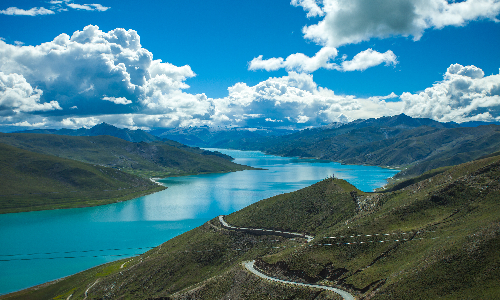
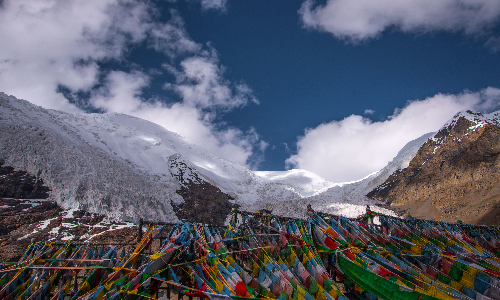
 Shigatse (4000 meters above sea level)
Shigatse (4000 meters above sea level) After breakfast, this morning we will go to the Pala Manor. On the southwest of Gyantse county in the Shigatse district of Tibet, there is a small village that has a famous scenic spot. It serves as a record of old Tibet’s history of the aristocracy as well as a true microcosm of different lives between the nobility and serfs in ancient Tibet. It turns out to be the Pala Manor. It is also well known that the best-preserved manor among the three aristocratic manors in ancient Tibet.
The Pala family is an ancient family with a history of more than 400 years. Among the many aristocracies of old Tibet, the Pala family ranks second only to the grand family formed by the Dalai Lama families in the past dynasties. Its descendants have become senior officials in the Tibetan government and the family is of great wealth. The Pala Manor owns 57 existing houses, covering an area of 5,537 square meters. The main building has three floors, with complete construction facilities and exquisite decoration. The third floor is the place of residence for the aristocracy. It includes the sutra hall, meeting room, bedroom, and special hall for playing mahjong. Its interior decoration is very magnificent. All the beams are carved with Tibetan patterns and there are fancy paintings on the wall. The manor is equipped with a spacious back garden with towering old trees. You can also see the precious tableware, imported wine, imported white vinegar, and treasured fur clothing left by the Pala aristocrats. All of this vividly reproduces the luxurious life scene of the Pala family at that time. It should be mentioned that in the corridor of the main building, there are displays of whips, fetters, and other instruments of torture. Those tools were used by the old Tibetan nobles to oppress and rule serfs.
Then we will leave Gyantse for Shigatse. We need to drive northwest for about 95 km (1 hour and 40 minutes) to our destination.
Located at the confluence of the Yarlung Tsangpo and Nyang Qu Rivers in the southwest of Tibet, Shigatse is 3,800 meters above sea level. It is now the second-largest city in Tibet. It was the residence of the Panchen Lama. Shigatse is also the most colorful region in Tibet. There you can find vast prairie pastures, fertile river valleys, lush jungles, and high-altitude snow-covered mountains. In the meantime, it is one of the “granaries of Tibet” for its mild climate, sufficient sunshine, and developed agriculture which focuses mainly on grain, oil plants, and vegetables. Besides, Shigatse has a relatively mature industrial system, including industries in carpet, clothing, leather, ironware, woodware, gold and silver processing as well as national handicrafts. Shigatse also has a time-honored history and developed culture. The annual Buddha exhibition festival in the Tashilunpo Monastery and the Tibetan opera performances are renowned for their distinctive style in the world. Accordingly, Shigatse has become one of the most popular tourist areas in Tibet due to its splendid culture, imposing temple architecture, magnificent natural landscape, and superior geographical position.
We will have lunch and then you will be led to visit the Tashilunpo Monastery. The Tashilunpo Monastery is located on the hillside in the west of Shigatse city. It is the largest monastery in the Shigatse region of Tibet, which can be comparable to the Dalai Lama’s Potala Palace. It, together with the Ganden Monastery, Sera Monastery, and Drepung Monastery in Lhasa, is known as the “four major monasteries” of the Gelug School of Tibetan Buddhism. The Cuoqin Hall is the earliest building in the monastery. In front of the hall, there is a lecture field of 500 square meters. It is the place where the Panchen lectures and monks debate sutras. The hall can hold more than 2,000 people chanting sutras together. The pillars on the two sides in the hall are engraved with the monastery founder, the fourth Panchen, Sakyamuni Buddha as well as his great disciples. Many religious festival activities are held in this monastery. Among these, it is the annual festival for the exhibition of buddhas from May 14 to 16 of the Tibetan calendar every year. On the first day, the Amitabha Buddha in charge of the past will be exhibited. On the second day, the Shakyamuni Buddha in charge of the present will be exhibited. On the third day, the Jampa Buddha in charge of the future will be exhibited. You can see the buddha exhibition platform standing on the Nima mountainside in the north of the Tashilunpo Monastery. With a height of 32 meters and a bottom length of 42 meters, it is the highest building in Shigatse city. During the festival, farmers, herdsmen, many Buddhist believers, and pilgrims from all over Tibet will gather in Shigatse to celebrate. Some of them are even from Sichuan, Yunnan, and other provinces of China.
You must feel tired and want a nice rest after a day’s visit. Tonight, we will overnight in Shigatse.
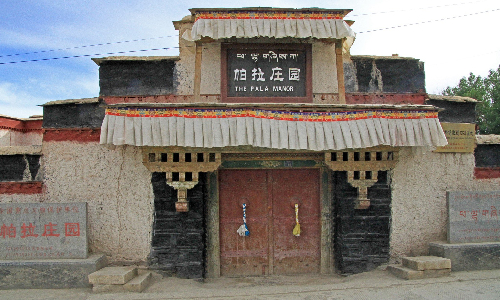
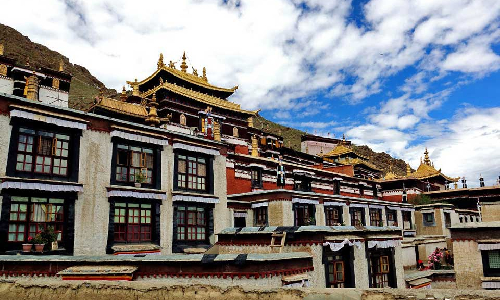
 Lhasa (3650 meters above sea level)
Lhasa (3650 meters above sea level) This morning we will say goodbye to Shigatse and go back to Lhasa. We need to drive east for about 270 km to our destination. There is no need to worry about the long journey which will take about 5 hours. It is because on the road to Lhasa you can see many scenic beauties. Thus, you will have a good travel experience along the road. Some people believe that traveling on the road is, to some extent, as important as getting to the destination.
On the way, you will have a chance to see the Yarlung Tsangpo River. It is the longest plateau river in China and one of the highest rivers in the world. The Yarlung Tsangpo River means “water flowing down from the highest peak” in ancient Tibetan. Like a silver dragon, the Yarlung Tsangpo River originates from the snow-covered mountains on the northern slope of the central Himalayas which is 5,300 meters above sea level. The whole river is 3,848 kilometers long. And it flows through China, India, and Bangladesh, occupying an area of more than 710,000 kilometers. Due to the abundant water flow and large drop height, it owns rich water power resources which are second only to the Yangtze River, China’s first longest river. But for the sake of ecological balance and intact protection of natural treasures, the Yarlung Tsangpo River is advisable not to be overdeveloped. The Yarlung Tsangpo River feeds the fertile land on both sides and is regarded by Tibetans as the “cradle” and “mother river”. Along the Yarlung Tsangpo River, you will see many temples. Most of the Tibetan people are devoted to Buddhism. Therefore, where there are people, there will be temples.
We will continue to go forward and we are to visit the Nyemo Tunba scenic area. It is situated in Tunba Township, Nyemo County, 120 kilometers away from Lhasa city. Meanwhile, it is one of the noted tourist attractions on the way from Shigatse to Lhasa. The scenic area is the hometown of Thonmi Sambhoza who is thought of as the inventor of the Tibetan characters and the Tibetan incense. Historically he was one of the seven sage officials of the king Songtsan Gambo in the Tubo Dynasty. He was ordered to lead 16 Tibetan youths to learn the ancient Sanskrit and Buddhist scriptures in India. Then after returning to Tibet, he created the Tibetan language and brought back the method of making Tibetan incense. So far, the scenic area has completely preserved the former residence of Thonmi Sambhoza, sutra hall, Tunba manor, and other ancient buildings. The Tibetan incense, Nyemo paper, and Nyemo carving are known as the “three specialties in Nyemo”. Moreover, in this place, you can see a Zhuoma Spring and there is an impressive story about it. It is said that this spring was formed by the tears of Zhuoma, the mother of Thonmi Sambhoza who left his home to study in India for many years. The mother missed her son so much that she often cried beside a divine river in Tunba. Over time, the tears had formed a spring here, which would be warm in winter and cool in summer. Later in memory of her, people named the spring after her name Zhuoma.
This afternoon we make no plan for your visit and you can freely arrange your time. Just do whatever you want. You can go shopping and purchase some specialties. Or you can choose to wander around and visit some places you are interested in. Of course, you can definitely get some useful and professional recommendations from your guide if you need. Never forget to turn to your guide if you have any questions. Enjoy your time!
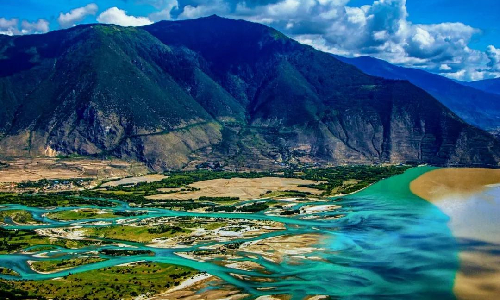
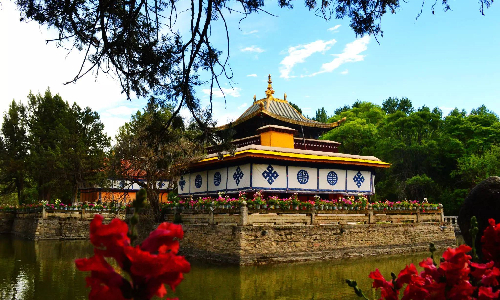
Today your seven-day Tibet tour comes to an end. We will take you to the airport according to your flight and you will fly back to your sweet home. We look forward to serving you next time.
Author: Zhenzhen Zhu
Proofreader: Betsy He
| City | Five Star hotel list | Four Star hotel list |
|---|---|---|
| Lhasa | Shangri-La Hotel Lhasa | Thangka Hotel |
| Other Cities | Guest House | Guest House |
 |
![]() About your child or infant, please contact us for a discounted price.
About your child or infant, please contact us for a discounted price.



We started with a few days in Beijing & ended in Shanghai, from where we visited the Forbidden City and Great Wall. In between we visited Terra Cotta Warriors Museum, Panda Base, Shanghai Disneyland.

We had a wonderful holiday in China which will remain long in the memory. China is a breathtakingly beautiful country full of splendid temples and palaces, mountains and rivers, peaceful rural scenes and bustling shopping streets.
 QUICK ENQUIRY
QUICK ENQUIRY